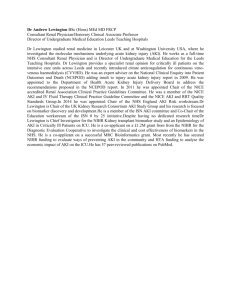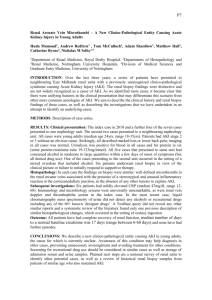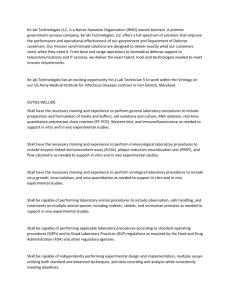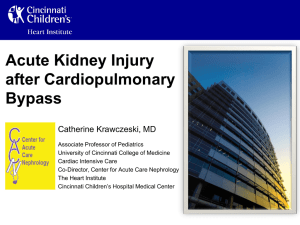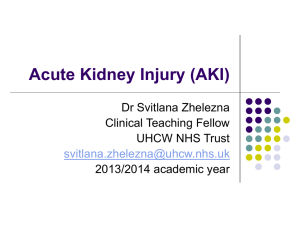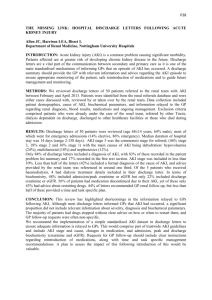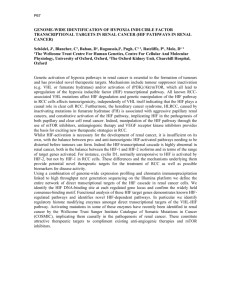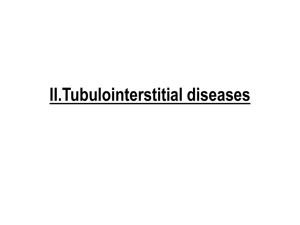DOCX ENG
advertisement
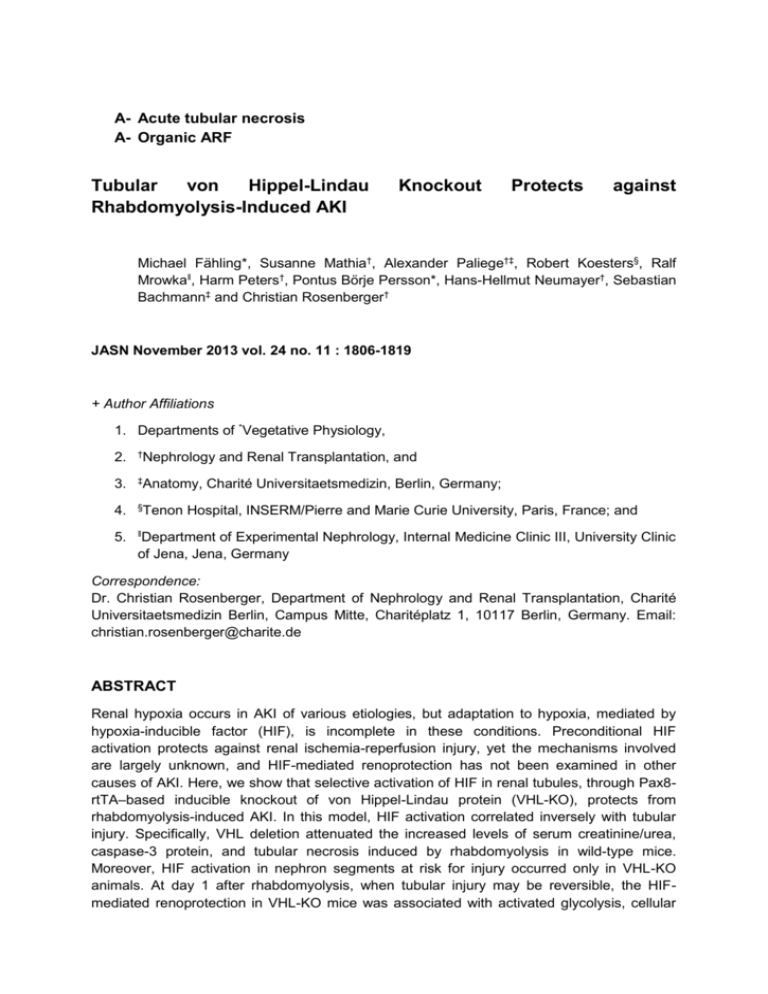
A- Acute tubular necrosis A- Organic ARF Tubular von Hippel-Lindau Rhabdomyolysis-Induced AKI Knockout Protects against Michael Fähling*, Susanne Mathia†, Alexander Paliege†‡, Robert Koesters§, Ralf Mrowka‖, Harm Peters†, Pontus Börje Persson*, Hans-Hellmut Neumayer†, Sebastian Bachmann‡ and Christian Rosenberger† JASN November 2013 vol. 24 no. 11 : 1806-1819 + Author Affiliations 1. Departments of *Vegetative Physiology, 2. † 3. ‡ 4. § 5. ‖ Nephrology and Renal Transplantation, and Anatomy, Charité Universitaetsmedizin, Berlin, Germany; Tenon Hospital, INSERM/Pierre and Marie Curie University, Paris, France; and Department of Experimental Nephrology, Internal Medicine Clinic III, University Clinic of Jena, Jena, Germany Correspondence: Dr. Christian Rosenberger, Department of Nephrology and Renal Transplantation, Charité Universitaetsmedizin Berlin, Campus Mitte, Charitéplatz 1, 10117 Berlin, Germany. Email: christian.rosenberger@charite.de ABSTRACT Renal hypoxia occurs in AKI of various etiologies, but adaptation to hypoxia, mediated by hypoxia-inducible factor (HIF), is incomplete in these conditions. Preconditional HIF activation protects against renal ischemia-reperfusion injury, yet the mechanisms involved are largely unknown, and HIF-mediated renoprotection has not been examined in other causes of AKI. Here, we show that selective activation of HIF in renal tubules, through Pax8rtTA–based inducible knockout of von Hippel-Lindau protein (VHL-KO), protects from rhabdomyolysis-induced AKI. In this model, HIF activation correlated inversely with tubular injury. Specifically, VHL deletion attenuated the increased levels of serum creatinine/urea, caspase-3 protein, and tubular necrosis induced by rhabdomyolysis in wild-type mice. Moreover, HIF activation in nephron segments at risk for injury occurred only in VHL-KO animals. At day 1 after rhabdomyolysis, when tubular injury may be reversible, the HIFmediated renoprotection in VHL-KO mice was associated with activated glycolysis, cellular glucose uptake and utilization, autophagy, vasodilation, and proton removal, as demonstrated by quantitative PCR, pathway enrichment analysis, and immunohistochemistry. In conclusion, a HIF-mediated shift toward improved energy supply may protect against acute tubular injury in various forms of AKI. COMMENTS Rhabdomyolysis, one of the leading causes of AKI, develops after trauma, drug toxicity, infections, burns, and physical exertion. The animal model using an intramuscular glycerol injection with consequent myoglobinuria is closely related to the human syndrome of rhabdomyolysis. Experimental data demonstrate renal vasoconstriction, tubular hypoxia, normal or even reduced intratubular pressure, as well as large variation in single nephron GFR. Intratubular myoglobin casts, a histologic hallmark, seem not to cause tubular obstruction, but rather scavenge nitric oxide and generate reactive oxygen species followed by vasoconstriction. The traditional discrimination between ischemic and toxic forms of AKI has been challenged because an increasing amount of evidence suggests that renal hypoxia is a common denominator in AKI of different etiologies. During AKI, hypoxia-inducible factors (HIFs), which are mainly regulated by oxygendependent proteolysis, were found to be upregulated in different renal tubular segments. Insufficient HIF-based hypoxic adaptation is found in AKI. Consequently, maneuvers of preconditional HIF activation are utilized to ameliorate AKI. Indeed, many of these attempts are successful but the majority are conducted in ischemia-reperfusion injury. von Hippel-Lindau protein (VHL) is a ubiquitin ligase engaged in the stepwise HIF-α degradation process, which constantly occurs during normoxia. In mice knockout for VHL (VHL-KO), selective, and persistent upregulation of HIF in all nephron segments can be acheived with adequate molecular biology techniques. So, a suitable model is established to study the protective role of VHL in response to hypoxia in a model of rhabdomyolysis. In this study, HIF activation through VHL-KO protects from rhabdomyolysis-induced AKI and provides evidence for a metabolic shift toward anaerobic ATP generation as the central protective mechanism. A genome-wide search for potentially renal-protective genes in early stages after the onset of AKI provides strong evidence for a metabolic shift toward anaerobic energy metabolism in tubules at risk as the main mechanism of renal protection through VHL knockout. Pr. Jacques CHANARD Professor of Nephrology
